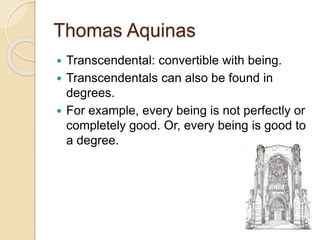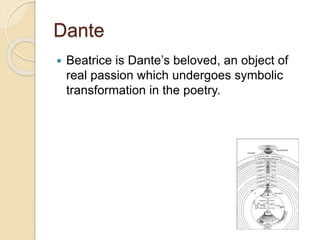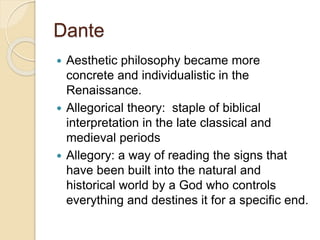The document discusses medieval aesthetics and key philosophers, including Augustine, Aquinas, and Dante. It provides background on their views of beauty, including that beauty emanates from God for Augustine and involves properties like proportion and harmony for Aquinas. It also discusses how Dante's Divine Comedy was influenced by Aquinas' philosophy and used allegory to reveal the true essence of individuals.




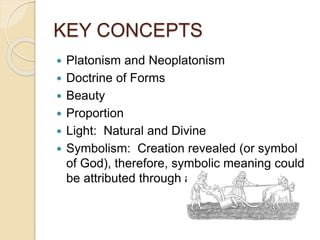










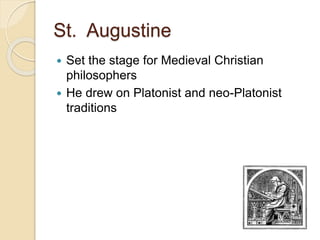







![St. Augustine
3) Number measures rhythm. It is the basis of
rhythm. Number and rhythm are both
immutable.
4) In all arts, it is symmetry [or proportion]
that gives pleasure, preserving unity and
making the whole beautiful. (Of True
Religion,xxx)
5) Everything is beautiful that is in due order.
(Of True Religion, xli)](https://image.slidesharecdn.com/medievalaesthetics-170308050428/85/Medieval-Aesthetics-24-320.jpg)
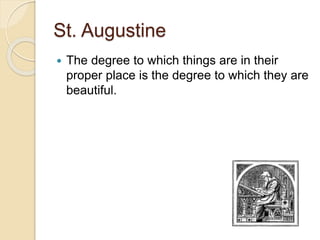













![Thomas Aquinas
Radiance: luminosity that emanates from a
beautiful object, which initially seizes the
attention of the beholder.
Thomas connects beautiful things with
divine light.
“All form, through which things have being,
is a certain participation in the divine clarity
[orlight]. And this is what [Dionysius] adds,
that particulars are beautiful because of
their own nature – that is, because of their
form” (Commentary on the Divine Names)](https://image.slidesharecdn.com/medievalaesthetics-170308050428/85/Medieval-Aesthetics-39-320.jpg)



